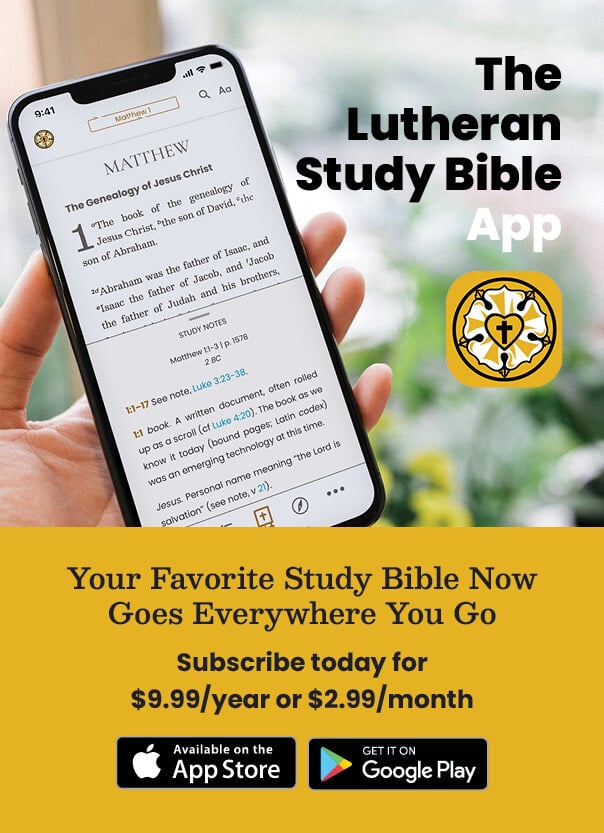Recent Posts by Concordia Publishing House
Philemon: An Overview
Paul’s experience under house arrest at Rome is well described by his frequent companion, Luke, in the last chapter of Acts (cf Phm 24). Paul had to pay his own expenses for the house while being allowed to receive guests and to teach them about Jesus, the Messiah. He wrote this letter to Philemon, who lived in Colossae, Asia Minor. One of Paul’s prison companions, Epaphras, was also from Colossae.
Brain Strategies for Preaching
It seems generally assumed that preachers want hearers to remember at least the main idea and purpose of the biblical truth considered in the sermon, as well as to reflect it in their lives. Here is a question that has not really been posed. How may preachers use new knowledge about the actual functioning of their hearers’ brains to help the hearers remember the biblical truths—ways that are more direct and beneficial than by just hoping the biblical truths will be remembered? How may the preachers’ expressions and explanations of God’s Word best reach this memory in hearers’ brains?
Titus: An Overview
Nicopolis was a Roman colony on the west coast of Greece, on the isthmus separating the Ambracian Gulf from the Ionian Sea. The city would serve as winter quarters for Paul and his colleagues in AD 68 before his arrest and second imprisonment at Rome. Paul was on his way to Nicopolis, perhaps along the road from Macedonia, when he paused to write this letter to Titus, his representative serving congregations on the island of Crete. Paul urged Titus to sail to Nicopolis and join him for the winter (3:12).
2 Timothy: An Overview
While searching for Paul, Onesiphorus would tread the broad streets of Rome, passing beneath the archways of its aqueducts and walking beside its grand colonnaded porticos. But the prison where Paul was held would be out of the way, along an alley or even in a cave, requiring all of Onesiphorus’s diligence to find his colleague.
Jesus Calls His Disciples: A Study of Matthew 10
Let the kingdom of heaven be proclaimed! Jesus has chosen the Twelve, and their instructions are clear: Preach and heal so that the world knows the Kingdom has come. The proclamation of the Kingdom continues today, and so God continues to send and protect His disciples.
This blog post is adapted from Matthew 1:1—11:11 in the Concordia Commentary Bible Study Series.
1 Timothy: An Overview
This blog post is adapted from Lutheran Bible Companion Volume 2: Intertestamental Era, New Testament, and Bible Dictionary.
Paul, on his way to Macedonia, has left Timothy at Ephesus with instructions to “charge certain persons not to teach any different doctrine” (1 Timothy 1:3). Paul does not describe this “different doctrine” systematically, but from his attacks upon it in 1:3–7; 4:1–3, 7; 6:3–5, 20–21 and from the tenor of his instructions for the regulation of the life of the Church, it is clear that Timothy must do battle with a deeply troubling heresy.
How God Speaks with His People
This blog post is excerpted from The Christian Faith: A Lutheran Exposition, second edition, by Theodore J. Hopkins and Robert Kolb.
God used the many and varied voices of the prophets to convey His message to His people (Hebrews 1:1), and He spoke the final, complete Word through His Son (Hebrews 1:1–2). His Word, His message for us, came in human flesh, as Jesus of Nazareth, who claimed all authority in heaven and earth because He is the author of life and the author of new life (Matthew 28:18).
What Does a Good Law-Gospel Sermon Look Like?
This blog is excerpted from an article by Rev. Carl C. Fickenscher II that was published in a previous edition of Concordia Pulpit Resources.
So much has been written on the dynamics of Law and Gospel—by classic authors such as Luther and Walther as well as more contemporary ones such as Gerhard Aho, Richard Lischer, Herman Stuempfle, and Gerhard Forde—that Law-Gospel preaching might be evaluated from any number of perspectives. In this study, though, seven criteria have been distilled from the various sources. While these are not exhaustive, they will be sufficient to determine whether meaningful differences in Law-Gospel effectiveness exist among sermon forms. In addition, it is hoped that the criteria can be guidelines which we preachers use personally to sharpen the Law and Gospel of our own messages.
2 Thessalonians: An Overview
The city of Thessalonica, named after a sister of Alexander the Great, was
built within sight of one of the great religious landmarks of ancient Greece.
Southward, across the Thermaikos Bay, the people could see the distant
slopes of Mount Olympus, traditional home of the gods in their culture.
Time in the Biblical World
While we take for granted that time is divided into units of minutes, hours, days, weeks, months, and years, as well as an annual calendar of twelve months, when considering biblical chronology we cannot assume that our understanding of the passage of time is the same as that of the biblical writers.
Moreover, since the various books of the Bible were written over a number of centuries and in different places, we cannot assume that every biblical author was referring to units of time in the same way. Therefore, we must first familiarize ourselves with the reckoning of time at various times and places in the ancient world.




















